Say What?!? AAC Assessment for Children Who Speak with Dr. Jill Senner and Matthew Baud
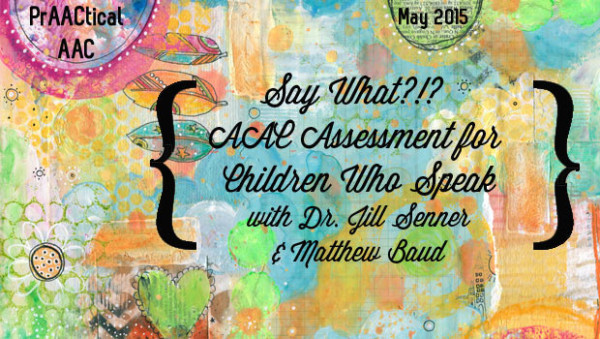
While the Index of Augmented Speech Comprehensibility in Children (I-ASCC) has been around for almost 20 years, few clinicians know and use it. In this post, we welcome back Matthew Baud and Jill Senner to talk about how they are using this assessment tool. Enjoy!
AAC evaluations can be challenging, especially if there is disagreement among team members as to whether AAC is necessary or not. We frequently see disagreements about AAC arise when a student is able to speak. Let’s examine the following case.
Mrs. Brown has had Johnny in her class for the last 2 years and she “understands everything” he is saying during their routine calendar time. The new SLP, who only sees Johnny once weekly for 30 minutes, tried to elicit information about his weekend at home and reported that she “didn’t understand anything.” What is going on here? How can two communication partners have such vastly different experiences with the same student? Who is right and who is wrong? Actually, both reports are true! Extrinsic factors such as partner familiarity and known versus unknown context can have a significant impact on speech comprehensibility (i.e., how well the student’s message is understood). The Index of Augmented Speech Comprehensibility in Children (I-ASCC), developed by Dr. Patricia Dowden (1997), is a valuable tool that we frequently use to help teams resolve similar conflicts and develop effective speech-supplementation strategies for students who speak.
The I-ASCC is a non-standardized clinical measure to determine single-word speech comprehensibility in children (Dowden, 1997). Children are shown picture stimuli and their answers are recorded. Familiar and unfamiliar communication partners then listen to the recorded samples with unknown and known contexts.
The following is a video clip of a child taking the I-ASCC. First watch the video without knowing any contexts. Write down the words you think he is saying.
Now, watch the video again but first download and review this list of context cues. When you are finished, download the answer key and see how well you did.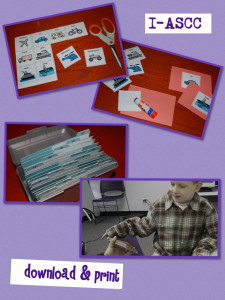
As an unfamiliar communication partner, you probably didn’t understand as much as someone who knows him well but you probably did better with context known than when you listened without! This instrument yields quantitative data regarding how well familiar and unfamiliar communication partners understand a child with and without context.
Because this tool was described in a research article and it isn’t yet commercially available, it took us a while to assemble. Since we have already spent the time to put the materials together, we have made the files available for sharing so you too can take advantage of this helpful resource. Instructions, record forms, and stimulus pictures in Picture Communication Symbols (PCS) and SymbolStixs can be found on our AAC Assessment Pinterest board or by clicking on the image below.
We look forward to Dr. Dowden releasing an electronic version of the instrument in the future. Until then, break out the scissors, glue and note cards!
Direct Link to Document Download (zipped file): http://www.talcaac.com/IASCC%20Share.zip
::::::::::::::::::::::::::::::::::::::::::::::::::::::::::::::
Reference
Dowden, P. (1997). Augmentative and alternative communication decisions making for children with severely unintelligible speech. Augmentative and Alternative Communication, 13, 48-58.
Jill E Senner, PhD, CCC-SLP, Owner and Director of Technology and Language Center, Inc. (talcaac@gmail.com) is a speech-language pathologist with almost 20 years of experience working with children with complex communication needs. She is the owner/director of Technology and Language Center where she specializes in providing augmentative and alternative communication (AAC) and assistive technology (AT) services including assessment, consultation and training, and workshops/lectures. Dr. Senner has presented at numerous national assistive technology conferences and has taught graduate courses in AAC and swallowing disorders. She has published research in the areas of AAC, siblings and disability, and swallowing disorders in cerebral palsy. Her current research interests are focused on communication partner training.
Matthew R. Baud, MS, CCC-SLP, Assistive Technology Coordinator for Niles Township District for Special Education (Mbaud12@gmail.com; Mbaud12 [Twitter]) has been working with AAC for the past 13 years. He currently is the Assistive Technology Coordinator at Niles Township District for Special Education (NTDSE) performing evaluations, trainings and coaching of AAC with students, staff and families. Matthew also has his own AAC private practice working with individuals with complex communication needs from birth through adulthood. He is an adjunct professor at Saint Xavier University where he teaches a graduate course in AAC and has presented at several national and state conferences.
The Picture Communication Symbols ©1981–2015 by Mayer-Johnson LLC a Tobii Dynavox company. All Rights Reserved Worldwide. Used with permission. Boardmaker® is a trademark of Mayer-Johnson LLC.
© 2005-2015 SymbolStix LLC. All Rights Reserved Worldwide. Used with permission.
Filed under: PrAACtical Thinking
Tagged With: assessment, Jill Senner, Matthew Baud, speech intelligibility
This post was written by Carole Zangari
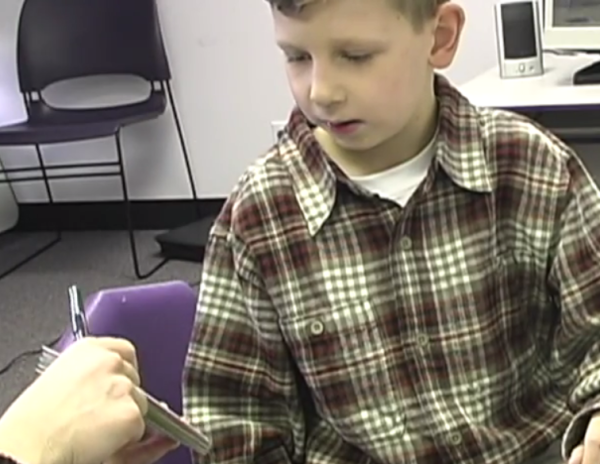
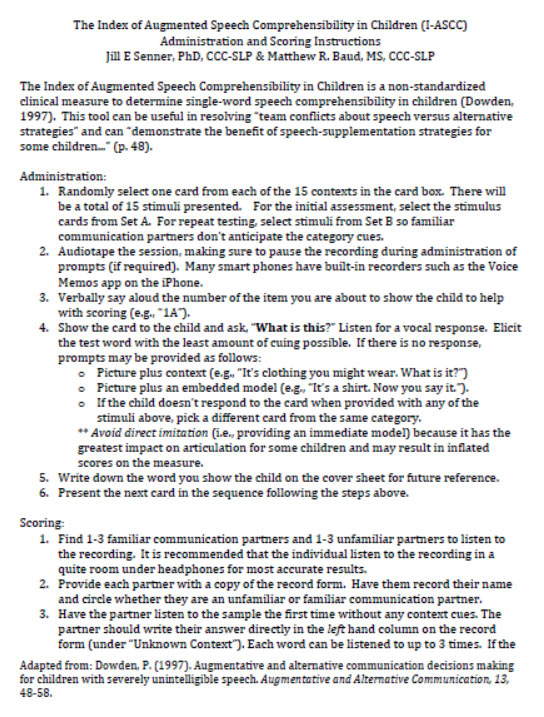

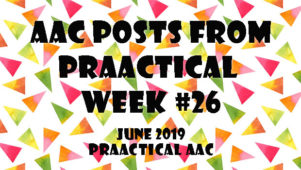

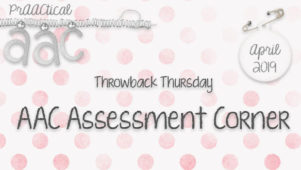
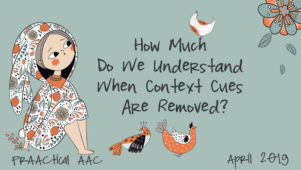
8 Comments
This is amazing! Just what my team has been needing to provide the best help for a student. Thank you!!!
I followed the link to Pinterest and found the pin but it does not link to any handouts…..clicking on the image did not work either, thanks
Sue, I have reached out to the authors to try to get a direct link to it. I will post it here when they respond. Sorry for the inconvenience.
Sue, here is the direct link to the zipped file that you can download: http://www.talcaac.com/IASCC%20Share.zip
I tried to download this and my computer warned that it has a potential virus or spyware. Has anyone else tried to download it?
Hi Jane, I am working with the authors of the post on this. It may be a setting on your computer that gives that alert whenever zip files are being downloaded. In any event, we are working on an alternative pathway to ensure safe file downloads. That should be available in a few days. Sorry for the inconvenience.
Thanks to Dr. Senner & Matthew Baud for sharing this! I had a post-it note hanging in my cubicle for literally a year reminding me to figure out/create materials for Index of Augmented Speech Comprehensibility in Children. It was a tool I’d read about but couldn’t find a finished product, so to speak. Thanks for taking the time to create these materials! I have several students in mind for this tool.
Rachael Langley
Thanks for sharing Dr. Senner & Matthew Baud. Your resource will be helpful. Wondering if the electronic version ever surfaced?